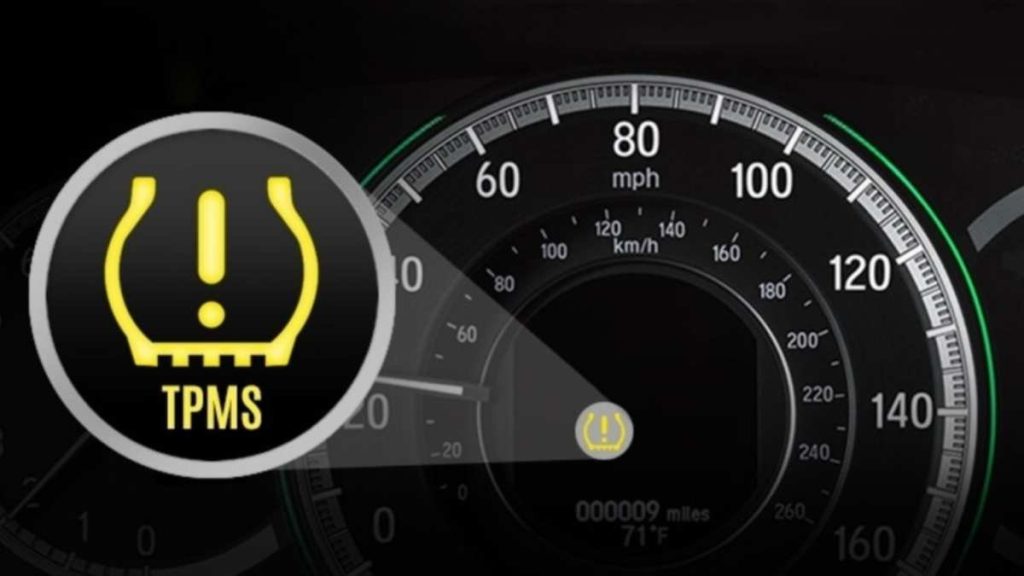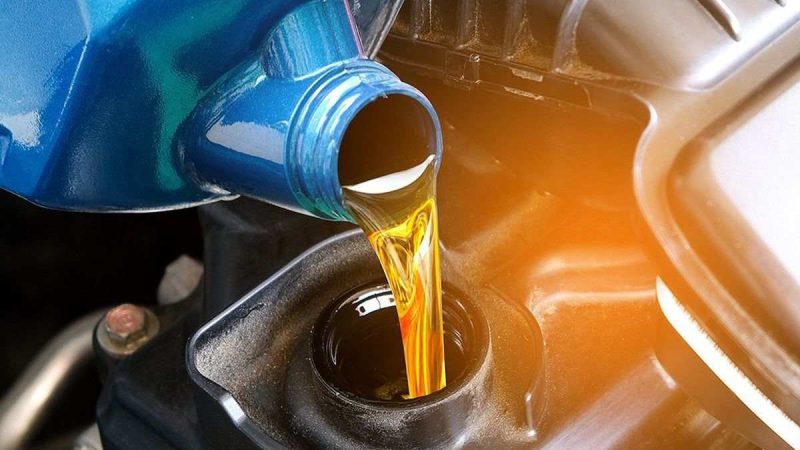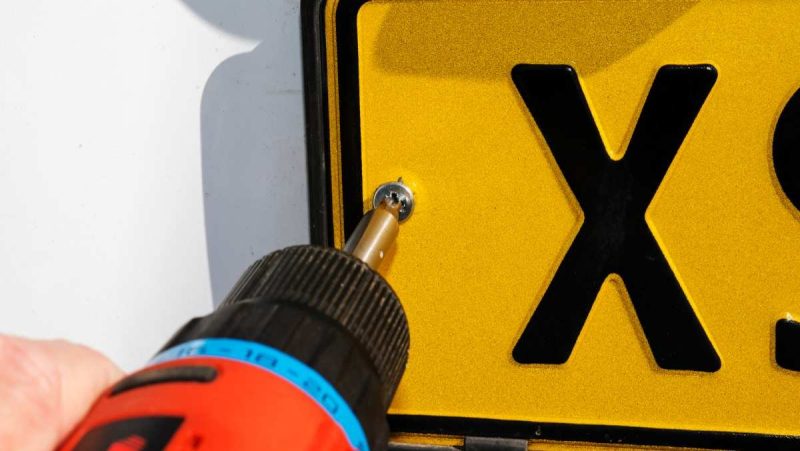Low Tire Pressure Light But Tires Are Fine? Do This

Seeing the low tire pressure light but tires are fine? Don’t ignore it. Learn what you can do about it.
Ah, the tires — ever so important for the basic and safe operation of any road-going vehicle but too often overlooked. As you probably already know, poorly functioning tires can make your vehicle operate less efficiently or, worse, go out of control, potentially causing an accident.
Tire pressure is one particular area you should pay close attention to. Fortunately, most modern vehicles feature a tire-pressure monitoring system (TPMS) that alerts you whenever there is too much or too little air pressure in one or more of the tires.
Unfortunately, while this system works as designed most of the time, it can sometimes give a false reading.
“Why is my tire pressure light on when my tires are fine?” Keep reading to find out.
IN THIS GUIDE
How A Tire Pressure Monitoring System Works
Before we jump into the causes of this TPMS issue, it’s important to understand how a TPMS works.
First off, a tire-pressure monitoring system is an electronic system that monitors tire air pressure and alerts the driver when a tire is significantly under-inflated due to a puncture or other causes.
There are two types of tire pressure monitoring systems:
- Direct TPMS. This type of TPMS uses pressure sensors mounted on each of the vehicle’s wheels or tire valves to continuously monitor tire pressure. When low pressure is detected, the information is transmitted to a digital receiver, triggering the Low Tire Pressure warning light.
- Indirect TPMS: This system approximates tire pressure by measuring the rotational speed of a wheel relative to the others using the wheel speed sensors on the ABS or Anti-Lock Brakes, with the vehicle CPU illuminating the warning light when a drastic variance is detected.
Which of the two TPMS systems is better? A direct TPMS gathers more accurate pressure data and provides more up-to-date information than indirect TPMS; however, it’s a more complicated system and, therefore, more prone to glitch and damage
The pressure sensors, in particular, can easily malfunction if a wheel hits a serious pothole or even when a tire is haphazardly replaced or serviced.
But regardless of the type of TPMS your vehicle has, if the low tire pressure light turns ON but there is nothing wrong with the tires, there is probably a problem with the TPMS that needs to be addressed.
Low Tire Pressure Light But Tires Are Fine – The Causes
Several things can cause the low-pressure light to come on even though none of your tires are flat, under-inflated, or over-inflated. The following three are the most common.
Faulty TPMS
If the pressure light turns on and remains illuminated, this usually means the TPMS is not working properly. With vehicles that use a direct TPMS, the problem could be due to a faulty tire pressure sensor.
Components of the sensors (seals, gaskets, valve caps, etc.) may be worn, or their built-in battery, if any, could be low on power or dead.
Sometimes, the TPMS sensors malfunction as a result of substances other than air or nitrogen entering the tires (e.g. flat-repair sealant during repair), while other times, it’s due to a loss of communication between the sensors and tire pressure control module.
If you suspect a faulty tire-pressure monitoring system to be the problem, your best option is to have a trusted mechanic inspect the TPMS and make repairs as necessary.
Recent Tire Replacement
As noted earlier, vehicles with a direct TPMS rely on pressure sensors located on the rim of the wheel or the tire valve. Tire changes and rotations can, therefore, damage the sensors or other connected components if not performed properly.
The low tire pressure light can also be triggered if the old tire or wheel is replaced with a new unit that either doesn’t have a pressure sensor or has one that isn’t compatible or properly calibrated with the entire TPMS.
So, whenever you go for a tire or wheel change, don’t drive away without first checking to make sure that you have the right replacement parts, everything is installed and calibrated properly, and the low tire pressure light isn’t on.
I’m sure you don’t want to hassle yourself coming back to the auto shop for corrections.
Extreme Temperature
Extreme cold or heat can have a major effect on tire pressure. Heat causes the air in a tire to expand and take up more volume, while cold temperatures condenses the air, making it take up less volume.
So tire pressure fluctuates along with the weather but usually not to a degree that compromises tire performance. In instances where very cold weather reduces air pressure, simply driving the car for a short while will heat the tires enough to raise tire pressure back to normal levels.
The problem is that this temperature-induced drop in tire pressure can sometimes trigger the low tire pressure warning light even though all the tires are properly inflated. While the light usually turns off after the tires heat up and regain pressure, it can sometimes stay on.
Should the latter case occur, use a tire pressure gauge to make sure the tires have the right pressure level. If the light remains illuminated, your best bet is to check the TPMS for issues.
How To Diagnose And Fix A Faulty TPMS
Now that you know the reason(s) why your low tire pressure light is ON even though the tires seem fine, let’s take a closer look at what you can do about it.
The problem can usually be diagnosed and resolved in three steps.
Step 1. Go For A Short Drive
The first step is to confirm the problem you’re dealing with. When you start the vehicle, the low tire pressure warning light should turn ON for a few seconds and then turn OFF.
If the light remains illuminated, drive to the closest gas station or tire shop and have each tire checked for the correct air pressure.
As discussed earlier, the warning light can often be triggered when the pressure in a tire drops 10-15 percent below normal levels due to the weather getting colder. This is a normal occurrence that’s easily resolved by going for a short drive to allow the tires to heat up and regain their air pressure.
If the low tire pressure warning light stays ON even after doing all of this, move on to the next step.
Step 2. Reset The TPMS
Unless you know where in your vehicle the TPMS reset button is located, you’re going to need your owner’s manual to find it. The bottom is usually located beneath the steering wheel or inside the glove box in most vehicles, but check to make sure.
After you’ve located the TPMS reset button, follow these steps to reset the system:
- Turn the vehicle’s ignition without starting the engine.
- Press and hold the TPMS reset button for 3-5 seconds until the tire pressure light blinks several times and/or the system makes an audible warning sound. The light should then turn off.
- Start the engine and drive your car or truck for at least 30 minutes to completely reset the sensors.
If this doesn’t work and the light turns back ON, there is likely something wrong with the TPMS sensors. Jump to the last step.
Step 3. Check Pressure Sensor For Damage
A faulty TPMS can set off the Low Tire Pressure Light even if the tires are fine. This could be due to actual damage to the sensors, dead batteries, and/or a poor signal receiver.
Have your mechanic inspect the condition of each TPMS sensor and make repairs as necessary. Sensors that are too damaged will need to be replaced.
TPMS Light Won’t Turn Off FAQs
Here are answers to a few popular questions regarding the topic of a car’s tire pressure light not turning off.
Why Won’t My Tire Pressure Light Go Off?
If your tire pressure light won’t go off even after ensuring all your tires are properly heated and have the right air pressure, you likely have a faulty or poorly calibrated tire pressure monitoring system.
The pressure sensors might be damaged in some way, have dead or dying batteries, or have lost communication with the tire pressure control module. You should have them inspected by a trained technician.
Is It Safe To Drive With Low Tire Pressure Light On?
No. While it’s possible for the low tire pressure light to turn ON even when your tires are fine, the warning light often signals that one or more of the tires is underinflated or overinflated.
Driving with underinflated tires will accelerate tire wear and can lead to potential tire failure and even a blowout, both of which are dangerous. Don’t want to take any chances.
What To Do When Your Low Tire Pressure Light Won’t Turn Off?
The first thing you should do is make sure all your tires are properly heated and have the correct air pressure. If that doesn’t make the warning light turn OFF, reset your vehicle’s tire pressure monitoring system and, if necessary, have its sensors checked for damage or poor connection.
Sometimes, the TPMS sensors need to be recalibrated or even replaced.
Final Thoughts
Whether you drive a car, SUV, or expensive truck, an internal combustion engine or electric vehicle, new or used, you will almost certainly experience a situation where the low tire pressure light turns ON even though there is nothing wrong with your tires.
Sometimes, the problem has to do with a faulty tire pressure monitoring system or sensors, while other times, there isn’t really a problem but rather a missignalling caused by outside temperature fluctuations.
Regardless of the cause, your best course of action is always to check the air pressure of each tire to ascertain the problem.
Getting rid of the low tire pressure warning light might require filling the tires to the correct pressure level if low tire pressure is the culprit, making sure that the TPMS sensors are working properly, and/or reset or recalibrate the TPMS.
Now that you know the answer to the question of “Why does my dashboard display the low tire pressure light but tires are fine?”, you might also be interested in knowing why turn signals only work sometimes, the implications of metal shavings entering your engine oil, and what causes white smoke to come out of the exhaust.







